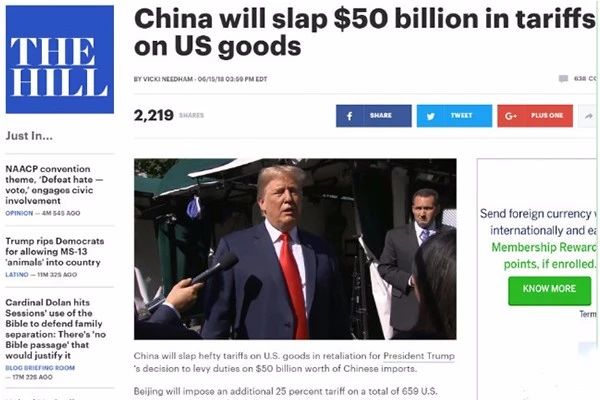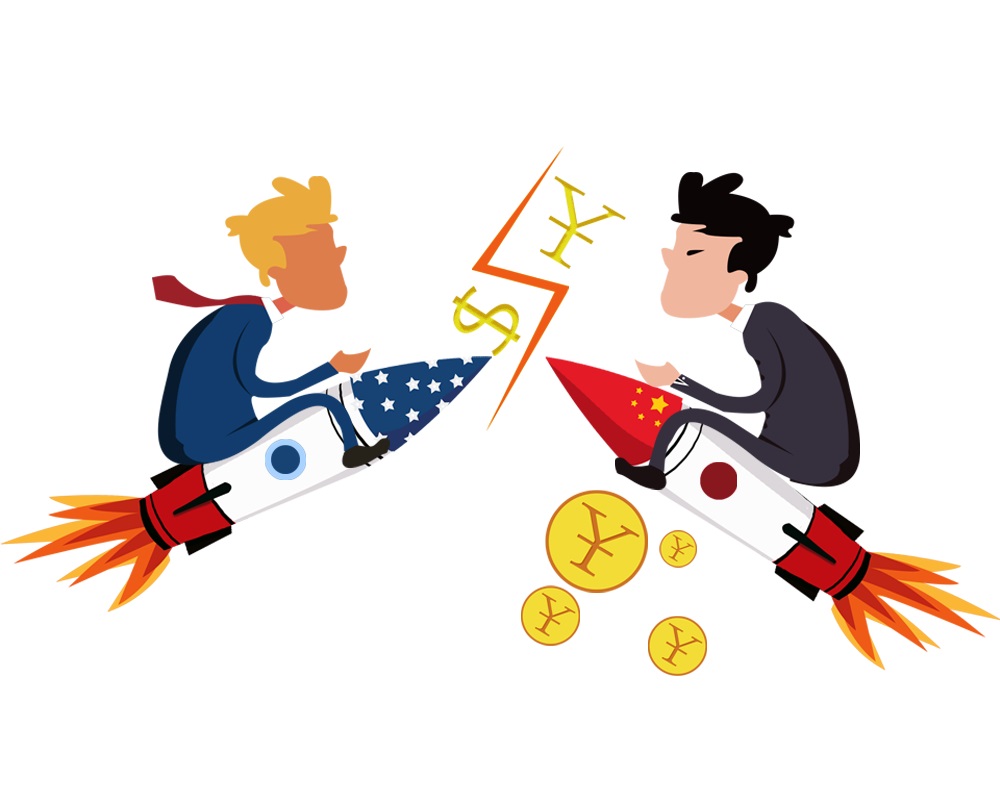The trade war started, we are still here!

On March 23 this year, the United States announced "301 investigation results"; April 16 imposed sanctions on ZTE, prohibiting US companies from selling all products to ZTE; on July 17, Japan and the EU signed double "zero tariffs" as targets Trade agreement; July 26, the US-Europe negotiations, reached a zero-tariff consensus, and said that it will strive to sign a free trade agreement; and in August, the United States and Japan will start free trade negotiations.
The news that the United States, Europe and Japan joined hands to create a "zero-tariff consortium" to curb China has instantly stirred up waves in the industry. There have been many discussions in the industry about the "US, Europe and Japan to start a new stove, without China to play", "the back of Europe, the Chinese back to the enemy" and other remarks.
Since the United States announced that it will impose a 25% tariff on about 50 billion US dollars of goods imported from China, Ministry of Commerce also said that it will adopt a unified effort and the same scale of reciprocal measures for products without products. . Trump then threatened to impose tariffs on at least $200 billion of Chinese goods, and the trade war started.
From a micro-industry perspective, the industries involved in this trade war will be affected more or less, such as China's electromechanical industry, high-end manufacturing, US agriculture, automotive and aircraft manufacturing. For China, the first and foremost impact is the electromechanical industry. For the United States, the agricultural products industry, especially the soybean industry, will also be greatly affected. China is the largest soybean importer in the United States. China's current imports of soybeans from the United States account for 60% of total US soybean exports. China’s 25% tariff increase will have a huge impact on US soybean farmers. Many agricultural exporters in the United States jointly opposed the trade war initiated by Trump and even wrote a letter to the White House.

There are already many online articles on Sino-US trade wars, and there are analysis at the national level and at the strategic level. We will set aside these high-level statements, what should ordinary export companies do.
European and American markets are no longer the first choice for export companies
In the past, Chinese entrepreneurs chose the US and other European and American markets, mainly focusing on market maturity and high-end consumption. To some extent, the European and American markets do have high-end technology cores. However, for most small and medium-sized foreign trade enterprises in China, Chinese goods do not occupy a favorable position in countries such as Europe and the United States. On the one hand, because the United States and other European and American countries have higher thresholds for China's foreign trade goods, on the other hand, Chinese goods are in Europe and the United States. Not competitive enough. In addition, the United States imposes a 25% tariff on Chinese products, which means that the price of Chinese products will increase and the competitiveness in the United States will decline. The US, Europe and Japan will reach a zero-tariff agreement, and Chinese products will be more difficult in the European and American markets.
The “cake” of the Middle East non-market is gradually growing
In the infrastructure construction, cultural and entertainment industries, the Middle East, Africa and other countries are later than Europe and the United States, but with the gradual stabilization of the political situation, these countries' demand for infrastructure, culture and entertainment continues to expand. The shortage of electricity, railways and houses has made the government continue to attract foreign investment. Saudi Arabia’s “Vision 2030” focuses on infrastructure development. In the agriculture, auto parts, textile and other industries, the Middle East non-market also has a huge gap, while the Middle East Africa also has a huge demographic dividend.
“One Belt, One Road” paves the way for enterprises to enter the Middle East non-market
In recent years, China's contacts with the Middle East and North Africa have become increasingly close. China has put forward the "One Belt, One Road" strategy and opened up the ties between China and the Middle East. In terms of policy, China and the Middle East have achieved friendly exchanges. In economic terms, China's energy, minerals and agricultural products mainly rely on the Middle East and Africa. Infrastructure and high-tech industries need China, and the two can achieve mutual benefit and win-win situation.
1. In January 2016, Chinese President Xi Jinping was invited by Saudi Arabia to visit Riyadh for a state visit to Saudi Arabia.
2. In March 2017, Saudi King Salman visited China at the invitation of President Xi Jinping;
3. In July 2018, the 8th Ministerial Meeting of the China-Arab Cooperation Forum was successfully held in Beijing;
4. Recently, Xi Jinping opened a diplomatic journey in Middle East and Africa;
The industry insider pointed out that traditional foreign trade enterprises need to make great efforts in three aspects, namely, doing product innovation and enterprise internal training, developing the Belt and Road market, and giving full play to China's Internet model and technological advantages.
At present, the European and American markets are becoming increasingly saturated and have become a red sea, and emerging markets are rising. With the development of the “One Belt, One Road” strategy, global resources are accelerating to gather in China, and China’s intellectual creation is accelerating toward the world. There are trees in the “Belt and Road” emerging markets, and there are many tens of millions of dollars in construction and operation of overseas warehouses along the “Belt and Road” or related countries.
The Saudi International Trade Fair (2018JITF) is the oldest comprehensive international trade fair in the Gulf region and one of the largest international events in Saudi Arabia. It is recognized by the Islamic Development Bank and the Jedd Chamber of Commerce and Industry, which represents the highest level of development in Saudi industry and industry. The strong support of the Saudi Ministry of Commerce has been successfully held for 29 sessions.
Every year, the exhibition attracts a large number of buyers from the Middle East and North Africa to visit: Saudi Arabia, UAE, Sudan, India, Palestine, Oman, Jordan and Egypt. Seeking a trade war, responding to the “Belt and Road” and developing non-emerging markets in the Middle East. On November 19-22, they will come to Saudi Jeddah to participate.

